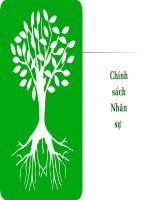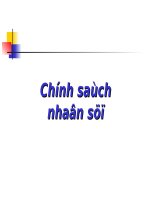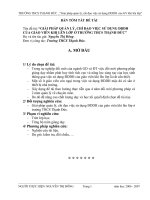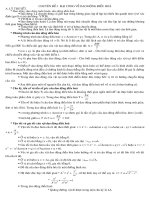DDDH SGK buổi 5
Bạn đang xem bản rút gọn của tài liệu. Xem và tải ngay bản đầy đủ của tài liệu tại đây (309.3 KB, 3 trang )
PRO 3M/3MPLUS – ƠN LUYỆN TỒN DIỆN CHO KÌ THI TỐT NGHIỆP THPT QUỐC GIA
Biên soạn: Cô Vũ Thị Mai Phương – Ngoaingu24h.vn
TÀI LIỆU ĐI KÈM LIVESTREAM
LUYỆN ĐỌC ĐIỀN - ĐỌC HIỂU ( BUỔI 5)
Theo dõi LIVESTREAM ĐỘC QUYỀN của cơ vào lúc
20h30 ngày 10/10 duy nhất trên khóa học PRO 3MPLUS
Cô Vũ Thị Mai Phương
ai
:T
ge
Pa
Exercise 1. Read the following passage and mark the letter A, B, C or D to indicate the correct word or
phrase that best fits each of the numbered blanks.
Why is culture important and how does it answer the question "(1) ____ is cultural identity?"? Culture is
the underlying (2) ____ of traditions and beliefs that help a person (3) ____ to the world around them. It is the
basis (4) ____ any superstitions they may have. It is the aversion to (5) ____ types of meat, or which days you
can work on. Culture gives us a definite starting point when beginning to (6) ____ for our roots. Knowing (7)
____ a person comes from will help to define how they look at their family obligations as (8) ____ as how
they celebrate important milestones in life.
As a person has given up their cultural identity, they (9) ____ can identify themselves with the things that
were (10) ____ the most important things in their lives. They lose direction. As time (11) ____ by and they
continue to forget about their past and their natural traditions, their identity becomes less and less (12) ____.
Question 1. A. How
B. Which
C. Why
D. What
Question 2. A. institution
B. foundation
C. organization
D. principle
Question 3. A. relate
B. relating
C. related
D. to relate
Question 4. A. in
B. for
C. of
D. to
Question 5. A. especial
B. special
C. specific
D. typical
Question 6. A. find
B. look
C. search
D. seek
Question 7. A. by which
B. how
C. when
D. where
Question 8. A. long
B. much
C. soon
D. well
Question 9. A. any longer
B. any more
C. no longer
D. no more
Question 10. A. at once
B. once
C. one time
D. for once
Question 11. A. goes
B. flies
C. passes
D. walks
Question 12. A. pronouncing
B. pronounce
C. pronounced
D.been pronouncing
Exercise 2. Read the following passage and mark the letter A, B, C or D to indicate the correct answer to
each of the questions.
Modern life is characterized not only by the conveniences made possible by technological advances but
also by greater mobility in search of still greater opportunities. These major life changes, however, expose
individuals to many novelties in a new culture, which are the causes of culture shock. Culture shock is a
process through which most people who enter a new culture pass through before they adjust to life in their
new environment.
Culture shock begins with the honeymoon stage”. This is the period of time when we first arrive in which
everything about the new culture is strange and exciting. Unfortunately, the second stage "rejection stage" can
be quite dangerous because the visitor may develop unhealthy habits (smoking and drinking). This can lead
to the person getting sick or developing skin infections or rashes, which then makes the person feel even more
scared and confused and helpless. This stage is considered a crisis in the process of cultural adjustment and
many people choose to go back to their homeland or spend all their time with people from their own culture
speaking their native language. The third stage of culture shock is called the "adjustment stage”. This is when
you begin to realize that things are not so bad in the host culture. You are becoming stronger by learning to
take care of yourself in the new place. The fourth stage can be called “at ease at last”. Now you feel quite
eu
Li
K
a
ho
ay
H
oc
H
n
ie
M
im
iK
Ph
an
V
KHĨA HỌC PRO3M/PRO3MPLUS – CHINH PHỤC ĐIỂM 9+ MƠN TIẾNG ANH CÙNG CÔ VŨ MAI PHƯƠNG
PRO 3M/3MPLUS – ƠN LUYỆN TỒN DIỆN CHO KÌ THI TỐT NGHIỆP THPT QUỐC GIA
Biên soạn: Cô Vũ Thị Mai Phương – Ngoaingu24h.vn
ai
:T
ge
Pa
comfortable in your new surroundings. You can cope with most problems that occur. You may still have
problems with the language, but you know you are strong enough to deal with them. The last stage of culture
shock, which many people don't know about, is called "reverse culture shock”. Surprisingly, this occurs when
you go back to your native culture and find that you have changed and that things there have changed while
you have been away. Now you feel a little uncomfortable back home. Life is a struggle!
Question 13. Which sentence best explains the main idea of paragraph 1?
A. Culture shock, experienced by people living in a new culture, consists of five basic stages.
B. People immigrate to other countries in search of better opportunities.
C. Modern life is characterized by many technological advances and greater mobility.
D. These major life changes are the causes of culture shock.
Question 14. It is stated that the "honeymoon stage” ____.
A. is involved in developing healthy habits
B. is exciting with the new sights, sounds, language and foods
C. is the initial period of culture shock
D. got its name because everything is new and exciting for the newcomer
Question 15. In paragraph 1, the word novelties probably means ____.
A. things which are new or unusual
B. things which are difficult to deal with
C. things which have to do with novels
D. things which are very young or recent in age
Question 16. In paragraph 2, the word host probably means ____.
A. the dominant country
B. the largest country
C. the newcomer's native country
D. the receiving country
Question 17. Which of the following is NOT true according the passage?
A. At forth stage, newcomers have overcome all problems in the new culture.
B. Immigrants may suffer from "reverse culture shock” when going back to native culture.
C. New arrivals in the second stage, "reject” the new culture by returning to their country or binding even
more with other people from their culture.
D. The "rejection stage” is the most difficult stage in the process of cultural adjustment.
Exercise 3. Read the following passage and mark the letter A, B, C or D to indicate the correct answer to
each of the questions.
In the Native American Navajo nation which sprawls across four states in the American south-west, the
native language is dying. Most of its speakers are middle-age or elderly. Although many students take classes
in Navajo, the schools are run in English. Street sign, supermarket goods and even their own newspaper are
all in English. Not surprisingly, linguists doubt that any native speakers of Navajo will remain in a hundred
years' time.
Navajo is far from alone. Half the world's 6,800 languages are likely to vanish within two generations that's one language lost every ten days. Never before has the planet's linguistic diversity shrunk at such a pace.
Isolation breeds linguistic diversity as a result, the world is peppered with languages spoken by only a few
people. Only 250 languages have more than a million speakers, and at least 3,000 have fewer than 2,500. It is
not necessarily these small languages that are about to disappear. Navajo is considered endangered despite
having 150,000 speakers.
What makes a language endangered is not that the number of speakers, but how old they are. If it is spoken
by children it is relatively safe. The critically endangered languages are those that are only spoken by the
elderly, according to Michael Krauss, director of the Alaska Native Language Center, in Fairbanks.
Why do people reject the language of their parent? It begins with a crisis of confidence, when a small
community finds itself alongside a larger, wealthier society, says Nicholas Ostler of Britain's Foundation for
Endangered Languages, in Bath. “People lose faith in their culture” he says. "When the next generation reaches
their teens, they might not want to be induced into the old tradition.” The change is not always voluntary.
eu
Li
K
a
ho
ay
H
oc
H
n
ie
M
im
iK
Ph
an
V
KHÓA HỌC PRO3M/PRO3MPLUS – CHINH PHỤC ĐIỂM 9+ MÔN TIẾNG ANH CÙNG CÔ VŨ MAI PHƯƠNG
PRO 3M/3MPLUS – ƠN LUYỆN TỒN DIỆN CHO KÌ THI TỐT NGHIỆP THPT QUỐC GIA
Biên soạn: Cô Vũ Thị Mai Phương – Ngoaingu24h.vn
ge
Pa
Quite often, governments try to kill off a minority language by banning its use in public or discouraging its
use in school, all to promote national unity. The former US policy of running Indian reservation in English,
for example, effectively put languages such as Navajo on the danger list. But Salikoko Mufwene, who chairs
the Linguistics Department at the University of Chicago, argues that the deadliest weapon is not government
policy but economic globalisation. "Native Americans have not lost pride in their language, but they have had
to adapt to socio-economic pressures" he says. “They cannot refuse to speak English if most commercial
activity is in English."
However, a growing interest in cultural identity may prevent the direct predictions from coming true. ‘The
key to fostering diversity is for people to learn their ancestral tongue, as well as the dominant language' says
Doug Whalen, founder and president of the Endangered Language Fund in New Haven, Connecticut. “Most
of these will ive without a large degree of bilingualism” he says.
ai
:T
Question 18. It is stated in the passage that the number of endangered languages is ____.
A. about 3,200
B. about 6,800
C. at least 3,000
D. fewer than 2,500
Question 19. The word peppered in paragraph 2 is closest in meaning to ____.
A. randomly separated
B. slowly attacked
C. sparsely distributed
D. unintentionally controlled
Question 20. According to the passage, endangered languages cannot be saved unless people ____.
A. avoid speaking their dominant language
B. grow interest in cultural identities
C. know more than one language
D. write in their mother tongue
Question 21. Who thinks that a change of language may mean a loss of traditional culture?
A. Doug Whalen
B. Michael Krauss
C. Nicholas Ostler
D. Salikoko Mufwene
Question 22. The word these in paragraph 5 refers to ____.
A. ancestral tongue
B. dominant language
C. growing interest in cultural identity
D. the key to fostering diversity
Question 23. Navajo language is considered being endangered language because ____.
A. it currently has too few speakers
B. it is spoken by too many elderly and middle-aged speakers
C. it was banned in publicity by the former US policy
D. many young people refuse to learn to speak it
Question 24. Which statement is NOT supported by the information in the passage?
A. A large number of native speakers fail to guarantee the survival of a language.
B. National governments could do more to protect endangered languages.
C. The loss of linguistic diversity is inevitable.
D. Young people often reject the established way of life in their community.
Question 25. What is the main idea of this passage?
A. To describe how diverse languages are in the past.
B. To explain the importance of persevering endangered languages.
C. To explain why more and more languages disappear.
D. To point out that many languages being in danger of extinction.
eu
Li
K
a
ho
ay
H
oc
H
n
ie
M
im
iK
Ph
an
V
KHĨA HỌC PRO3M/PRO3MPLUS – CHINH PHỤC ĐIỂM 9+ MƠN TIẾNG ANH CÙNG CÔ VŨ MAI PHƯƠNG









